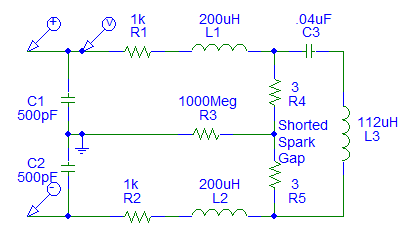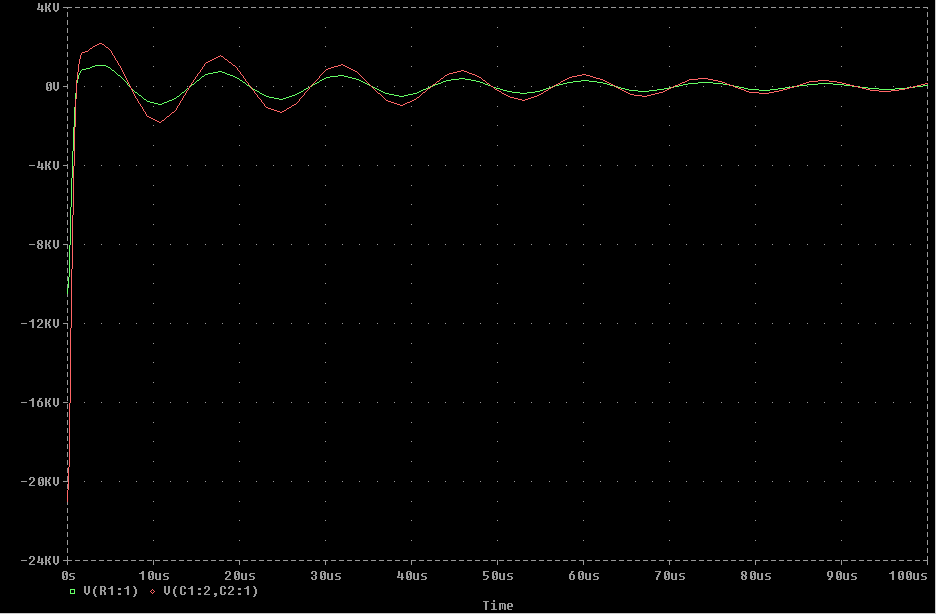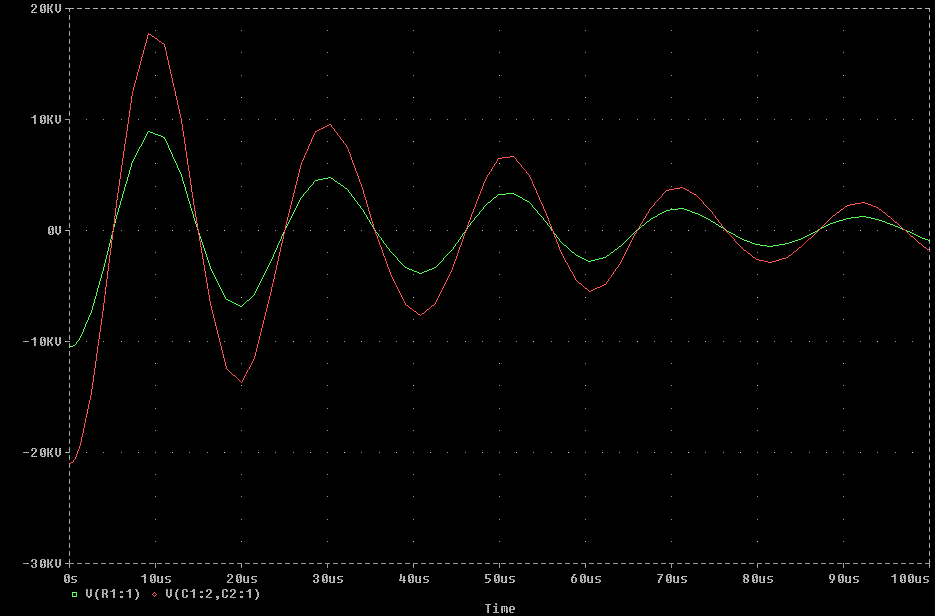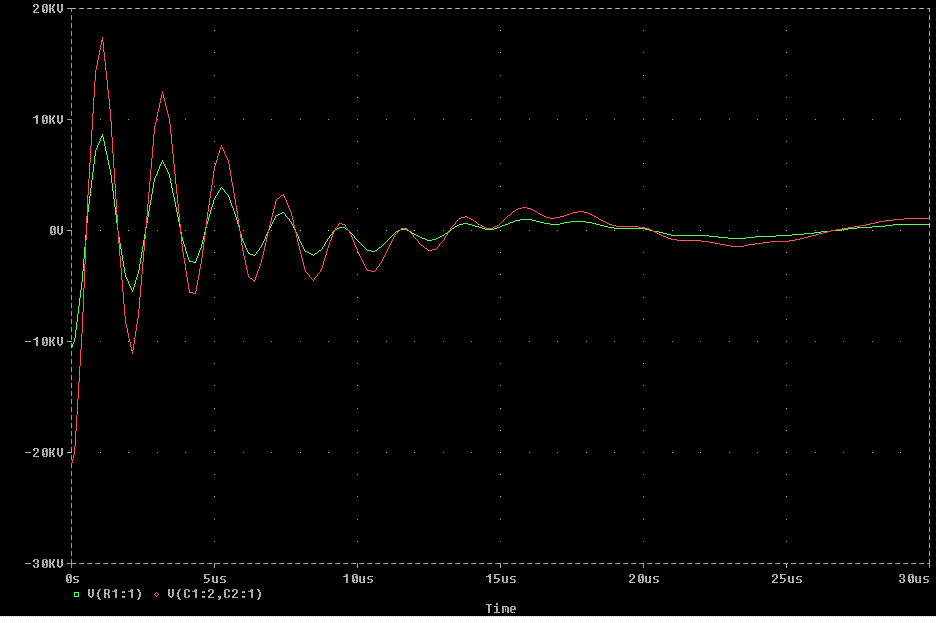

Above is the circuit that was simulated, and represents the R-C portion of a typical Terry filter. The NST would connect to the two leftmost wires. C1, C2, R1, & R2 are the R-C filter components. L1 & L2 represent the inductive component of the R1/R2 1K 100W Ohmite wire wound resistors, as provided by the manufacturer. R4 & R5 represent the on-state resistance of the main spark gap (WAG!). C3 & L3 represent the primary tank components, although they play no significant roll in this analysis. R3 is added to make the circuit simulator happy - it doesn't like circuit nodes with no DC path to the rest of the circuit. But the addition of a 1000Meg resistor doesn't impact the way the circuit behaves.
C1 & C2 have an initial charge at t0 of 10.5kV each, representing the state immediately before the main gap fires.

As you can see, things are pretty quiet using garden-variety wire wound resistors. The red trace represents the differential probes across the NST HV bushings, while the green trace is a measurement from one HV bushing to ground. The ~2kV oscillation is due to the tank circuit current across the spark gap resistance.
If I change the 200uH inductance that is integral to the resistors, to something much larger, 20mH (like when I tried adding chokes to the circuit), things take a turn for the worse. The 1K resistance is no longer sufficient to damp the oscillation of the inductance with the 500pF bypass cap:

There's a lot of oscillation that is probably not good for the NST. But even with the 200 uH inductance that's part of the wire wound resistor, the resistance is critical to dampening the oscillation. If I go back to the 200uH inductance but reduce the resistance to 100 Ohms, look what happens:

So - the Terry filter works just fine using regular wire wound resistors, provided the R value is right. There's no need or benefit to using non-inductive resistors, unless you just happen to have them.